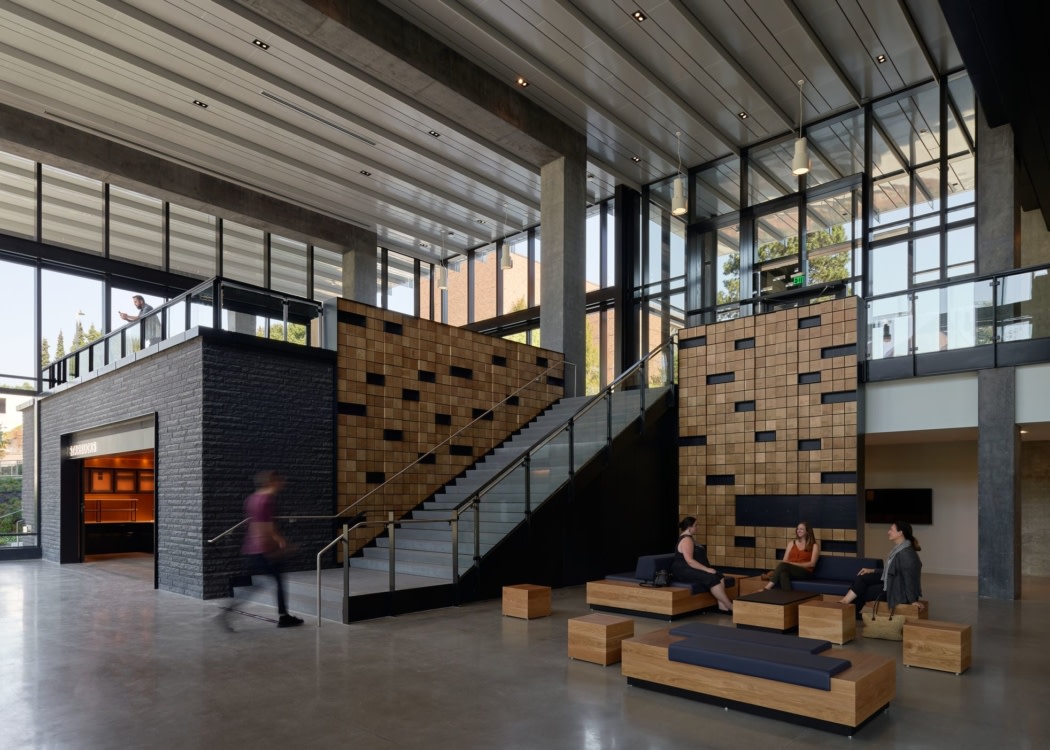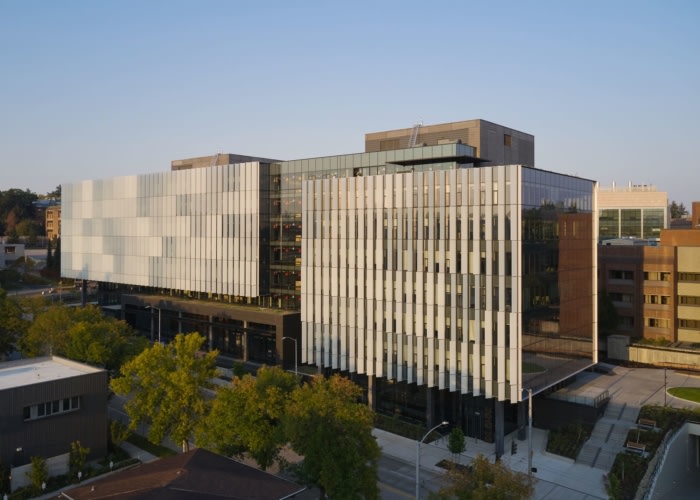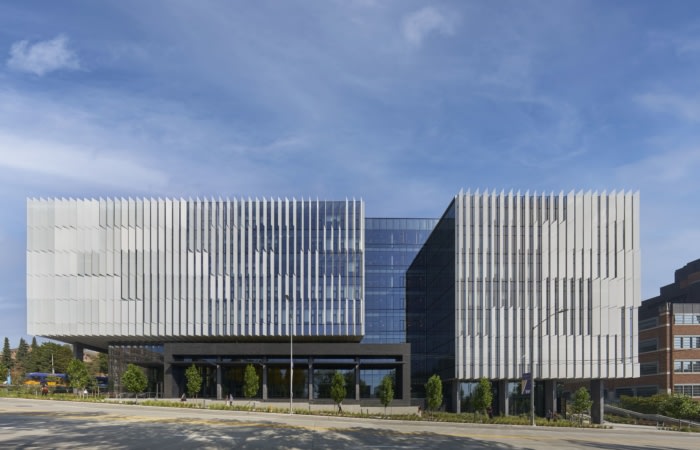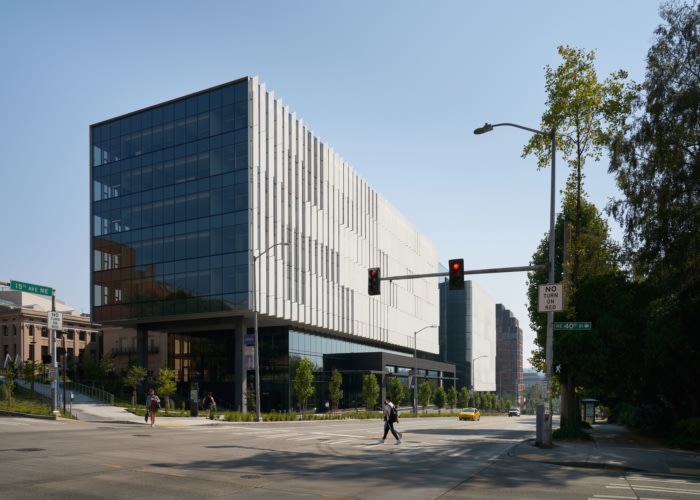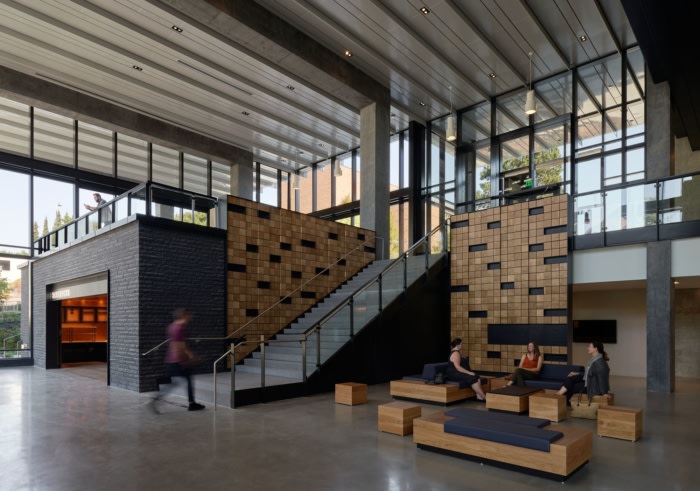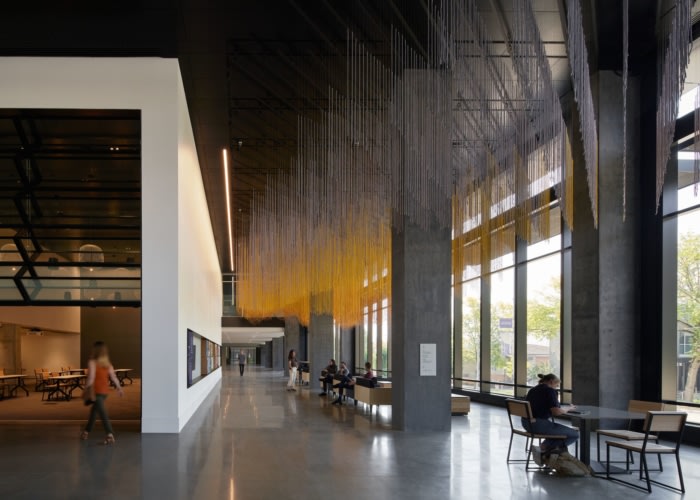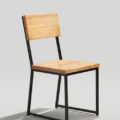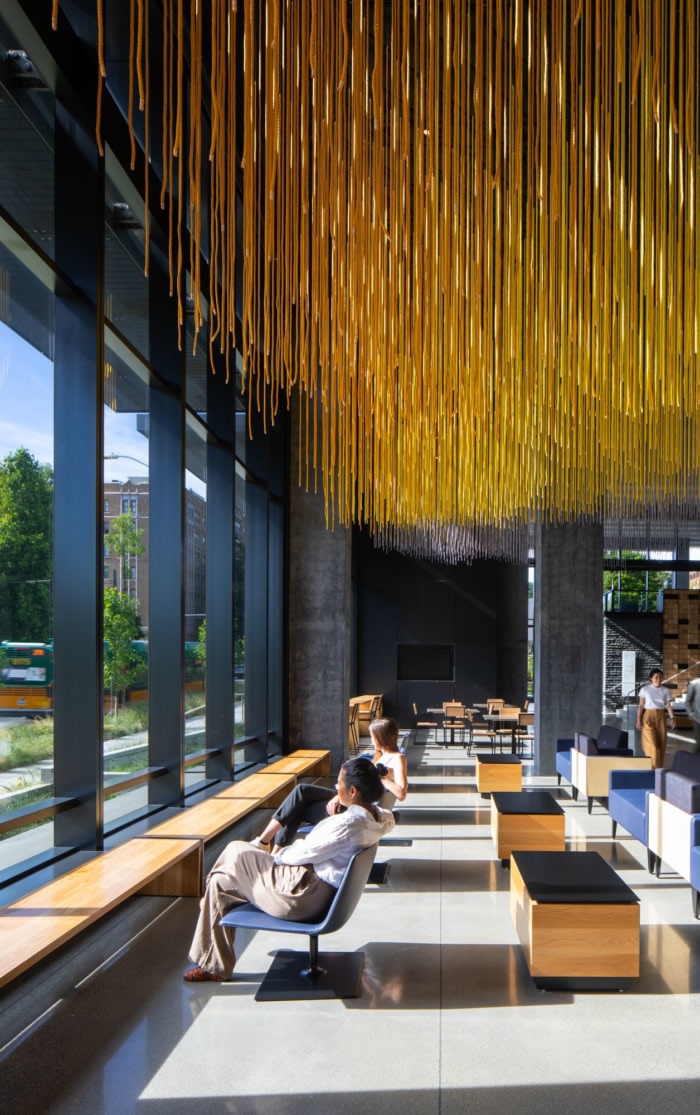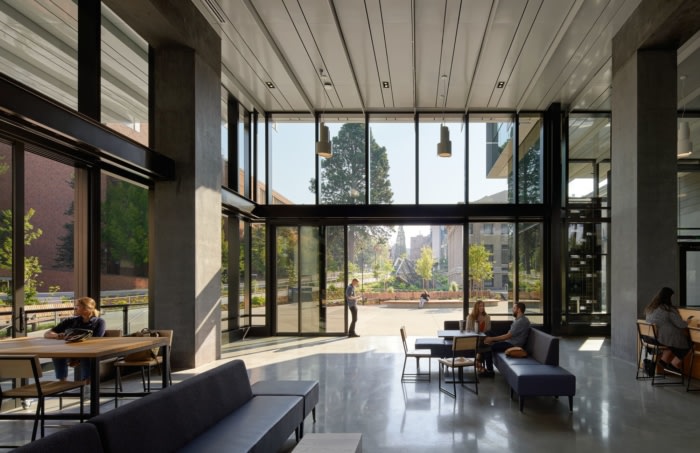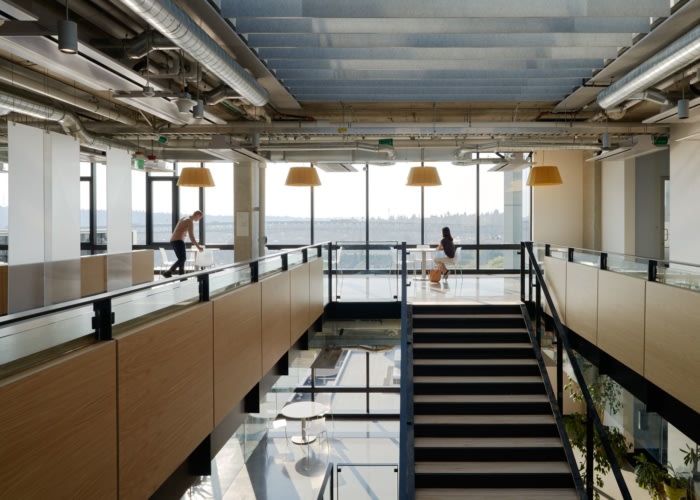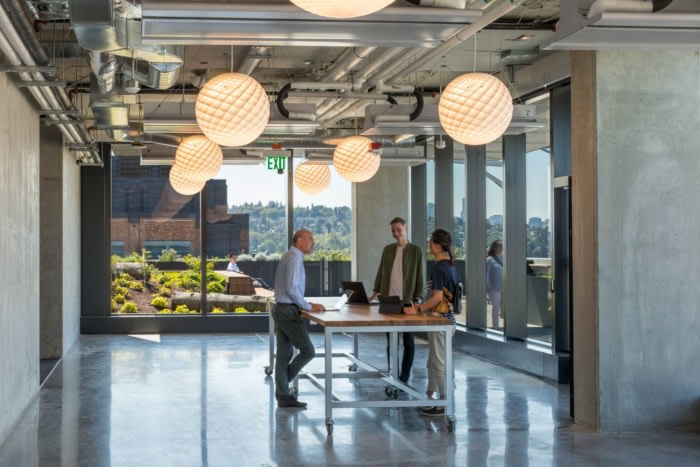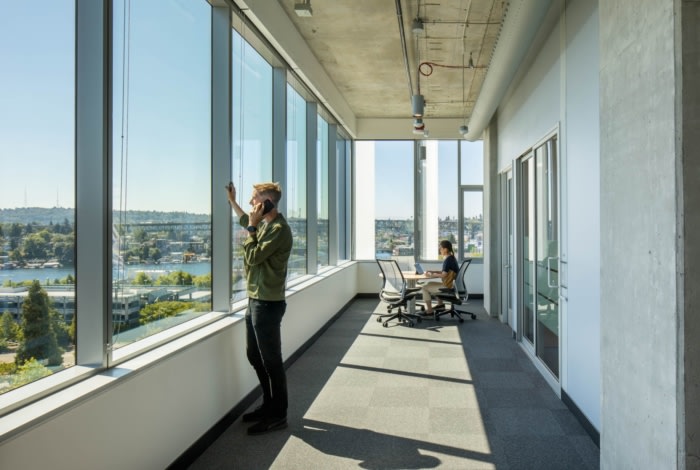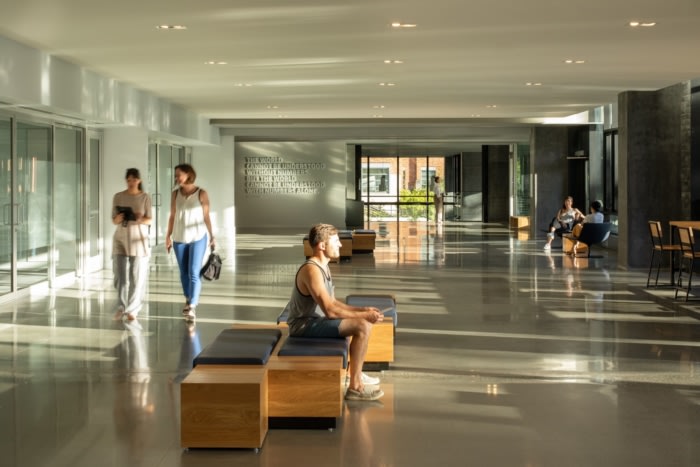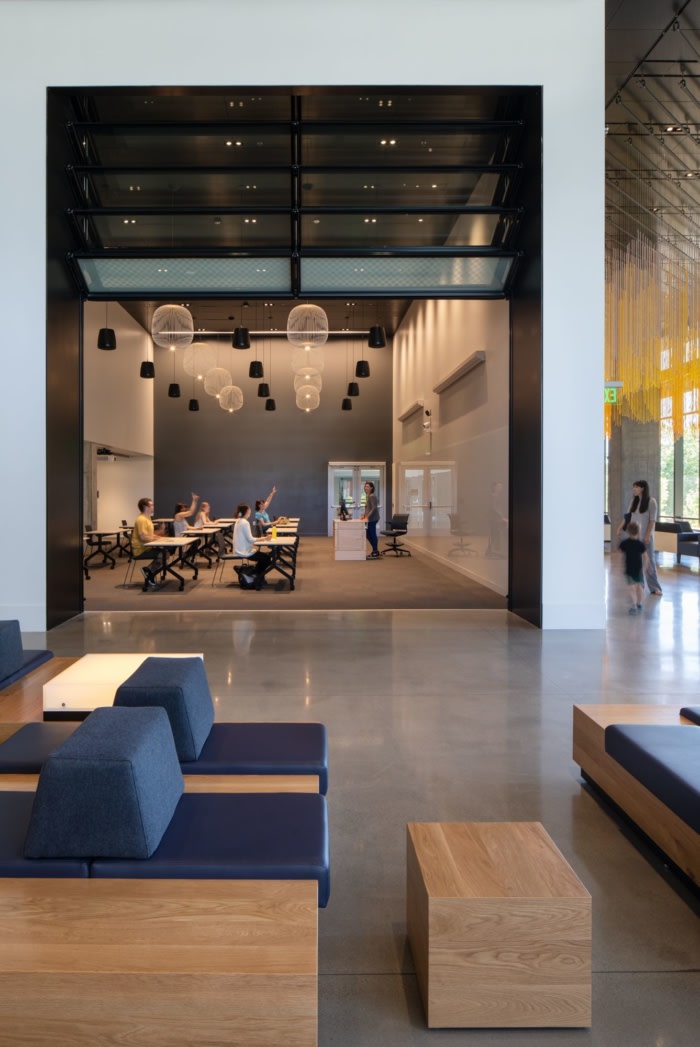University of Washington – Hans Rosling Center for Population Health
The Miller Hull Partnership designed the Hans Rosling Center for Population Health at the University of Washington in Seattle, Washington.
Named after a pioneer in the data-driven approach to improving health and well-being, the University of Washington’s Hans Rosling Center for Population Health was designed by The Miller Hull Partnership, LLP in collaboration with contractor Lease Crutcher Lewis. It will serve as a central hub for faculty, researchers, and students to work together with local and global partners to address some of the world’s most significant challenges across three key areas: human health, environmental resilience, and social and economic equity. The Rosling Center was completed ahead of schedule at the peak of a global pandemic and will house organizations dedicated to developing data-based response strategies for critical issues like poverty, equity, health care access, climate change, and COVID-19.
Made possible by a $210 million gift from the Bill & Melinda Gates Foundation and $15 million in earmarked funding from the Washington State Legislature, the Rosling Center houses the Institute for Health Metrics & Evaluation (IHME), The Department of Global Health, parts of the School of Public Health, and the offices of the Population Health Initiative. IHME’s projections have informed policy makers during the COVID-19 pandemic, and a number of researchers have shared their insights with CNN, the Wall Street Journal, and The New York Times.
The building’s layout makes it a successful model for system shocks like a pandemic, or other transformational events, which may affect how workers occupy the facility. A set of four office types cater to various working styles and are organized as a collection of neighborhoods, which breaks down the scale of each floor and democratizes access to daylight, views, and fresh air. They vary from 1–2 person shared offices, to 4–6 person shared offices, to open workstations and drop-in workstations. Each neighborhood contains flexible spaces, including shared offices and meeting rooms, which are easily transformable over time. The building encourages intermingling between groups, as casual interactions can often spark innovative ideas and opportunities.
The Miller Hull Partnership created a new accessible entry that safely invites people into the greater campus, the site, and the building. Upper workplace floors extend out to create a monumental covered porch and urban stair — a refuge from Seattle’s damp climate. Three interconnected ground floors ensure that anyone who enters the building has a welcoming “front door” and immediate visual connection to public program spaces. On the facade, three-foot-deep glass fins provide a dynamic shade and shadow composition that protects occupants from west sun and glare. Though physically static, the fins act as a canvas for changing light conditions throughout the day. A more subtle facade faces east toward the university’s historical core to bridge the gap between the original campus dating back to the 19th century and the new West Campus innovation district. Custom precast panels incorporate aggregate to integrate with neighboring buildings and provide a backdrop for lush landscape lining the area’s new Garden Walk.
At the soon-to-be LEED Gold certified Rosling Center, extensive Bioretention treats all rainwater that lands on impervious surfaces, while rain that falls on the building is stored in on-site cisterns and used for fire protection and toilet flushing. The high-performing façade reduces the building’s carbon footprint and provides the foundation for a low-impact mechanical system. While working inside the building, occupants maintain a stronger connection to the exterior environment through direct views, light play on the fins, and operable windows on the east and west façades. Throughout the building, design elements inspire healthy habits. Offices provide access to fresh air through operable windows, communal kitchens encourage healthy eating and vertical circulation prompts physical activity. Extensive measures were implemented to reduce chemicals of concern from materials, creating an interior that promotes human and environmental sensitivity.
Design: The Miller Hull Partnership
Photography: Kevin Scott, Lara Swimmer

